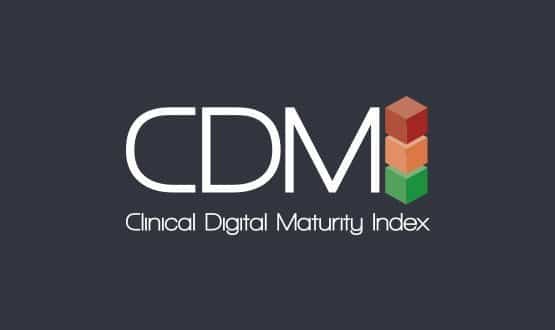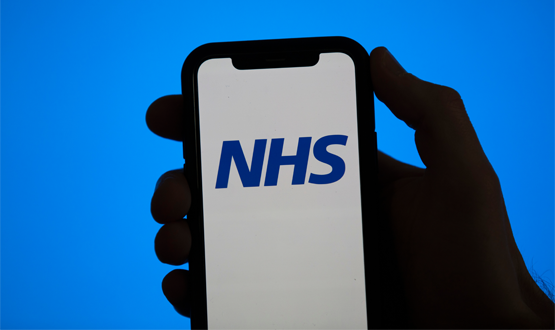Clinical digital maturity index, progress and next steps
- 17 July 2014

The Clinical Digital Maturity Index was launched in partnership with NHS England at EHI Live 2013 last November.
Nine months on seems like a good opportunity to summarise the development of the CDMI to date, and to outline the work that is now underway to help it evolve.
What is CDMI?
First, a quick reminder. The CDMI is the only online, comprehensive, independent benchmarking tool that enables comparisons to be made between acute trusts, according to their currently installed clinical and management IT.
Developed by EHI Intelligence over the past 18-months, the tool is available at no charge to all NHS staff. If you are an employee within the NHS, all you need to do to get access is to register with a valid NHS email address on the EHI Intelligence website.
The CDMI has its foundations in the EHI Intelligence database of systems in use across the NHS. This has been developed with a combination of data; starting with Freedom of Information Act requests, but increasingly shifting to direct interview, surveys and self-reporting.
In its initial version, the CDMI describes whether 27 different clinical and administrative systems are present within an acute trust, so trusts can benchmark their IT position with peers and make better informed decisions about future plans.
Crucially, CDMI data is provided alongside supporting financial and strategic contextual data from EHI Intelligence, to enable more effective comparisons. Trusts can compare their level of spending on IT with peers, for example, helping them to develop business cases.
Benefits of CDMI
Trust IT and clinical information leaders have already started to make use of the CDMI and supporting EHI Intelligence data; not just to benchmark their IT position, but to make the case for additional IT investment and inform specific procurement decisions.
“As a [clinical commissioning group chief clinical information officer] and commissioner this will prove invaluable [in having] more useful and meaningful discussion with our local acute trust providers,” one GP CCG board member told EHI. An NHS director of informatics said he had found the CDMI to be “a very beneficial tool.”
Partnership with NHS England
EHI Intelligence has worked closely with the NHS to collect, update and validate data and has always had the objective of forming a collaborative partnership with trusts.
Those working in the NHS have always had free access to the underlying EHI Intelligence service. For suppliers, access to the CDMI is available as part of an EHI Intelligence subscription.
In September 2013, NHS England licensed access to the full, extended CDMI tool on behalf of NHS staff in England for an initial 12 months; which is why you can register to use it for free if you have an NHS email address.
NHS England has said progress against the CDMI will be one of the criteria for evaluating bids to the ‘Safer Hospitals, Safer Wards: Technology Fund’ – now called the ‘Integrated Digital Care Technology Fund’.
As part of the agreement, EHI Intelligence committed to work with NHS England to further develop the initial acute trust CDMI as a robust digital benchmark. It further committed to develop equivalent CDMIs for mental health, community services and primary care.
CDMI baseline national report
The launch of the CDMI last November came in the form of a hefty, 170 page, National CDMI 2013 Baseline Report.
This gave details of how the CDMI was built, how it scored a trust’s performance, a ranking of trusts based on this scoring, and analysis of some of the additional information available.
In addition, 159 individual CDMI profiles were published and made available for download, one for every acute trust in England. You could benchmark, but you had to do a lot of reading!
CDMI dashboard
This April, a beta online dashboard was released, enabling full comparisons of all acute trusts against a range of user defined criteria.
This new tool enables users to draw instant graphs from live data. So, for example, you can look at whether a trust has an e-prescribing system or not. Or you can quickly determine whether a trust has a CCIO.
Each section of the graph produces a list of trusts that meet – or do not – meet the criteria. The CDMI dashboard is an iterative process, with new data and new features being added.
Approximately 45% of acute trusts have updated their CDMI data since the benchmarking tool was launched last November. The introduction of the CDMI dashboard means that a trust’s CDMI rankings are instantly updated.
CDMI scoring system
The initial, acute CDMI model assigns a score to individual trusts based on the presence of those 27 systems across nine levels; from a base of patient administration systems, to the presence of complex, inpatient, e-prescribing.
The scoring algorithm was designed to be inclusive and to make sure that it did not penalise specialist or smaller trusts; if a trust does not offer a particular service, then it won’t be penalised for not having a system to support it.
The scoring algorithm also recognises that some systems with more advanced clinical functionality have not been installed in the majority of acute trusts. These are assigned a higher score to provide a weighted composite score.
The intention is to evolve the CDMI beyond being a descriptor of the presence of systems and to reward trusts for ‘effective use’, how well used their systems are and what outcomes they are enabling – or not, as the case may be.
The first step to measuring effective use will be scope of use; answering the question ‘how widespread is the use of a given system?’
Given the CDMI’s value as a benchmarking tool, however, the intention is to keep the same systems in scope in order to track changes in the ranking over time, both for individual trusts and for the NHS overall.
CDMI Steering Group
EHI Intelligence has worked with NHS England to establish a CDMI Steering Group, comprising NHS chief information officers, IT directors and chief clinical information officers, plus supplier representatives.
The steering group held its first meeting in April, at which it elected Dr Johan Waktare as chair and Dr Mike Fisher as vice-chair.
Dr Waktare explained why he wanted the job in one of his regular columns for EHI: “The CDMI has two huge distinctions: it exists as a metric of UK healthcare IT implementation, and it is a comprehensive survey of the UK’s acute trusts,” he wrote.
“In both respects, there is nothing out there that is comparable. I am keen to build on what I regard as foundations and to develop something that begins to focus on measuring delivered functionality and outcome improvements.”
Getting effective on meaningful use
Over the past five years, the US federal government has accelerated the adoption of electronic medical records through a $38 billion stimulus programme, known by the short hand ‘meaningful use’.
The underlying principle is that payments are tied to healthcare providers being able to show they are making ‘meaningful use’ of clinical systems against increasingly demanding criteria.
In June 2013, EHI launched the ‘Big EPR Debate’ survey and consultation. This found broad support within the NHS and supplier community for the concept of establishing comparable ‘meaningful’ or ‘effective use’ measures for clinical systems – even in the absence of $38 billion of government funding.
EHI Intelligence is now working with the CDMI Steering Group and others to identify initial high impact ‘effective use’ measures that can be incorporated into an evolved CDMI that begins to measure clinical use and benefits.
What next?
Overall, the creation of the CDMI means that the NHS has – for the first time – a readily available measure of digital maturity in hospitals, with similar measures set to follow for mental health and community services.
With a baseline established for hospitals, annual progress can be measured. In November at EHI Live 2014, EHI Intelligence will present data on what progress trusts have made on digital maturity over the past 12 months.
With an independent Steering Group now established, and NHS England indicating its desire to take a leading role in future CDMI development, our aim now is to make sure the CDMI fulfills its potential.
We want it to provide the common, shared benchmark for future digital health services. It’s an ambitious objective, but nine months from launch we think we’ve made a good start. Working with NHS partners, we’ve put the CDMI on the map.




